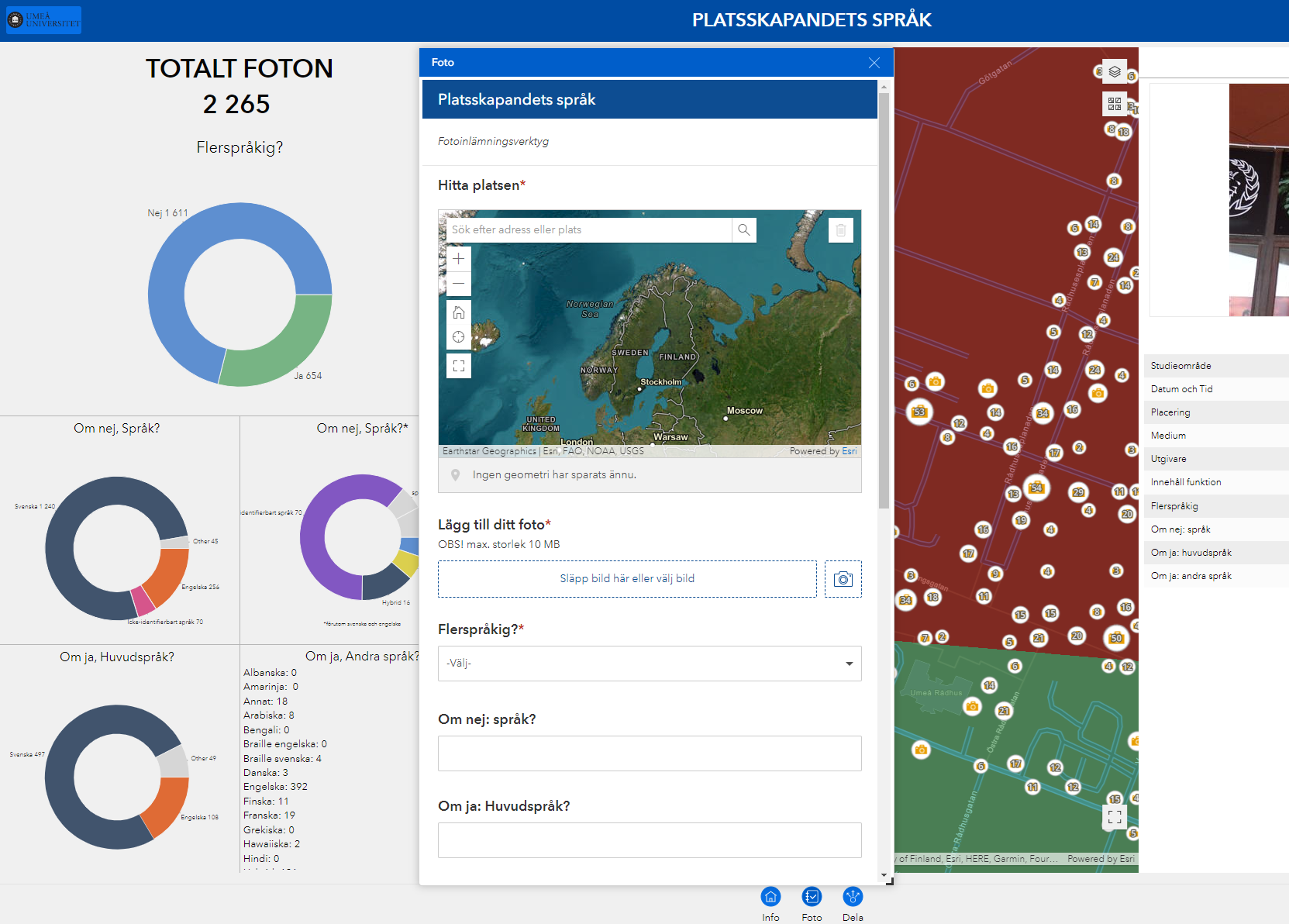Projektets syfte är att undersöka hur språk, när de materialiseras i vår omgivning, bidrar till att skapa offentliga rum. Med hjälp av kvalitativa och kvantitativa metoder beskriver och analyserar vi vilka språk som är synliga och vilka som inte är det, och relaterar dessa resultat till demografiska, socioekonomiska och språkliga egenskaper på olika platser. Detta gör att vi kan förstå hur urbana och rurala miljöer skapas med hjälp av majoritets-, urfolk- och minoritetsspråk.
This project focuses on linguistic landscapes in a traditionally linguistic rich area of Sweden, Norrland. The aim is to investigate how languages, as they materialise in our surroundings, contribute to the making of public spaces. Through a mixed-methods approach, we will describe and analyse which languages are visible and which are not, and relate these findings to demographic, socio-economic, educational and linguistic characteristics of different spaces. This will enable us to understand how urban and rural places are constructed by the use of majority, indigenous and minority languages.
Read more about project
 ArcGIS application screenshot of crowdsourcing feature
ArcGIS application screenshot of crowdsourcing featurePeople @ Humlab
In cooperation with
- Lena Granstedt
- Urban Lindgren
- Eva Lindgren
 Linguistic Landscape ArcGIS application main interface
Linguistic Landscape ArcGIS application main interfaceThis application guides you through more than 6,000 photos of signs around Norrland, Sweden and highlights their language and underlying demographics. The images were documented in 2020-2021. The grid-based demographic data is taken from SCB Register of the total population (2020-12-31).

